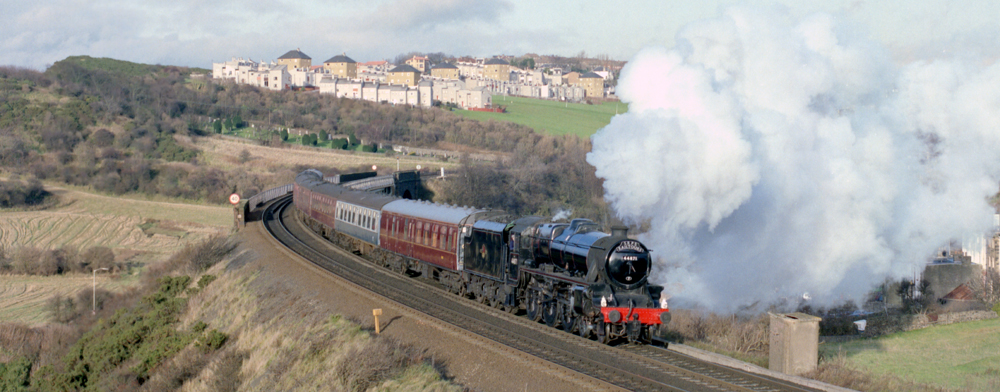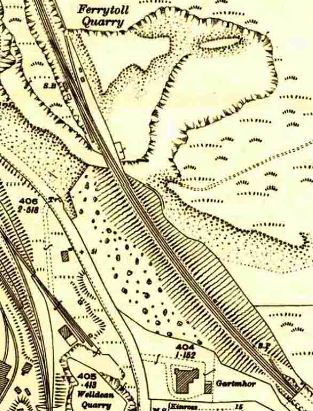Civic History – Welldean Catch Points

The railway line from Inverkeithing to North Queensferry follows a fairly steep rising gradient all the way through the tunnel to the level of the Forth Bridge. In the days of steam, the thudding of a powerful locomotive could be heard and felt throughout the village.

This is a photograph of a wall panel in the Dunfermline Library / Museum. It shows the points and signals from Inverkeithing, through North Queensferry and on towards Dalmeny.

If you look at the section between Inverkeithing and the North Queensferry tunnel, you will see a set of catch points and a sand drag.
They are designed to catch runaway rolling stock, or even complete trains, divert then into a siding where they are stopped relatively gently by a bed of sand and gravel. Some catch points used a short siding which terminated in a hard stop set of buffers.
The use of catch points became widespread in the United Kingdom after the Abergele rail disaster (1868), where runaway wagons containing paraffin oil (kerosene) collided with an express train. Catch points continued to be used in the UK until the mid-20th century. At this time, continuous automatic brakes, which automatically stop any vehicles separated from their train, were widely adopted, making catch points largely obsolete.
If you look at our Maps page and examine the railway line north of the tunnel, you will find several evolutions of the catch points (these are only visible on the 25” maps.)
There are no catch points on the 1897 map

In 1915 there are short sidings in both directions next to the Ferrytoll Quarry.
I suspect these were actually goods sidings which served the quarry.

In 1927, there is an additional short siding just at the mouth of the tunnel.
This is a set of catch points, which provided a hard buffer stop for a train rolling back out of the tunnel.
These catch points avoided a serious problem in 1954.

Following the incident in 1954, a new set of catch points and a sand trap were installed further from the tunnel.
This is the catch point and sand trap on the Dunfermline panel.
The incident in 1954
“The 6.55 p.m. express passenger train from Aberdeen to King’s Cross, comprising 13 bogie corridor coaches hauled by an A4 Pacific type engine, was climbing the steep 1 in 70 gradient from Inverkeithing to the Forth Bridge when the engine began to slip in the North Queensferry tunnel.
The driver realized that the engine was slipping on the track, but once the engine was in the tunnel, he could not see what was happening, because the unlit tunnel was dark, and full of smoke and steam. He first realized that the train was running backwards when he heard a bang – the rear carriage had hit the buffers in the catch siding.
The train had actually stopped momentarily about 300 yards inside the tunnel, and then ran backwards, with the result that the last three vehicles were derailed at the catch points just outside the tunnel.
The end of the last vehicle was forced across the Down Main at an angle of 45°, thus blocking both lines.
The next coach, a brake third, was canted on to its side and came to rest on the edge of a high embankment, whilst the third vehicle from the rear, a third class sleeper, was derailed in the catch siding.
Fortunately all the buckeye couplings remained connected and undoubtedly saved the brake third and probably the sleeping car from being precipitated down the embankment. Prompt steps were taken to rescue passengers from their perilous position and only one of them was slightly injured.”
You can read the full report from the Ministry of Transport inquiry here
Boyd Williamson, April 2018.
Wilf Monteith provided the document from 1954, and John Clemmens the photograph of the steam train.





